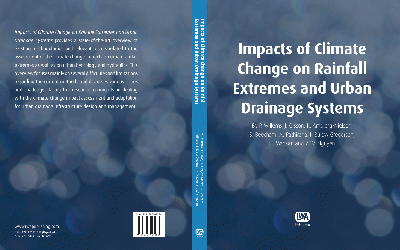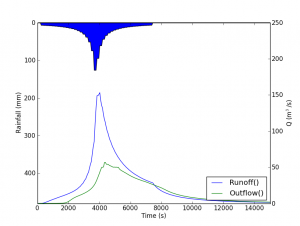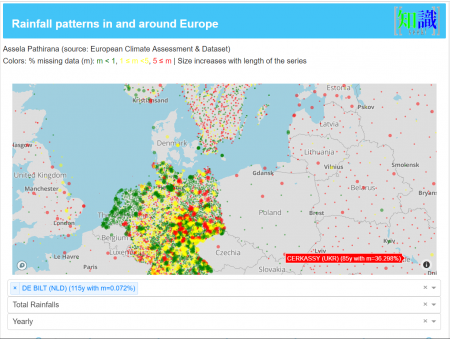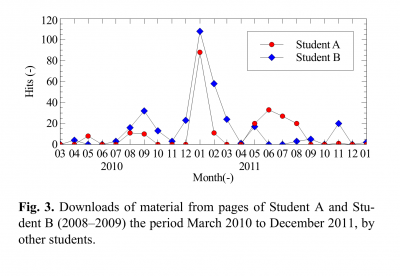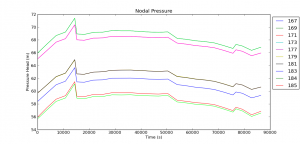Difference between revisions of "Assela Pathirana"
| Line 8: | Line 8: | ||
<div style="padding: .4em .9em .9em" id="MainPageBox1"> | <div style="padding: .4em .9em .9em" id="MainPageBox1"> | ||
==Climate Security of Small Islands== | ==Climate Security of Small Islands== | ||
Climate change presents unique challenges to Small Island Developing States (SIDS). The difficulties that all countries face in effectively coping with climate change impacts are exacerbated in SIDS because of their small geographical area, isolation and exposure. The associated development challenges from sea-level rise, altered rainfall patterns, and storm-surges threaten to reverse progress made towards the Millennium Development Goals now and in the future. The United Nations Development Programme (UNDP) provides on-the-ground support for small island and low-lying countries at the global, regional and national scales. - UNDP < | Climate change presents unique challenges to Small Island Developing States (SIDS). The difficulties that all countries face in effectively coping with climate change impacts are exacerbated in SIDS because of their small geographical area, isolation and exposure. The associated development challenges from sea-level rise, altered rainfall patterns, and storm-surges threaten to reverse progress made towards the Millennium Development Goals now and in the future. The United Nations Development Programme (UNDP) provides on-the-ground support for small island and low-lying countries at the global, regional and national scales. - UNDP <ref>https://sustainabledevelopment.un.org/index.php?page=view&type=400&nr=960&menu=1515#:~:text=Climate%20change%20presents%20unique%20challenges,geographical%20area%2C%20isolation%20and%20exposure. </ref> | ||
The Maldives is already facing the brunt of Climate Change in the guise of water scarcity. Small atoll islands' water security depend on the important, but highly climate-sensitive, fresh water lenses. [[Climate and Water Security in the Maldives| Read more ...]] | The Maldives is already facing the brunt of Climate Change in the guise of water scarcity. Small atoll islands' water security depend on the important, but highly climate-sensitive, fresh water lenses. [[Climate and Water Security in the Maldives| Read more ...]] | ||
Revision as of 10:01, 28 August 2020
Random musings on various topics: Climate and water security, Small Island Developing States (SIDS), IT tools, Computer programming and Web-Applications, Citizen Science, ... Views are personal!
Climate Security of Small IslandsClimate change presents unique challenges to Small Island Developing States (SIDS). The difficulties that all countries face in effectively coping with climate change impacts are exacerbated in SIDS because of their small geographical area, isolation and exposure. The associated development challenges from sea-level rise, altered rainfall patterns, and storm-surges threaten to reverse progress made towards the Millennium Development Goals now and in the future. The United Nations Development Programme (UNDP) provides on-the-ground support for small island and low-lying countries at the global, regional and national scales. - UNDP [1] The Maldives is already facing the brunt of Climate Change in the guise of water scarcity. Small atoll islands' water security depend on the important, but highly climate-sensitive, fresh water lenses. Read more ...
Urban adaptation in rapidly growing cities need a paradigm shiftWe have been working with rapid developing cities like Can Tho, vietnam (see our work) regarding adaptation. Here we intentionally use the term "Urban Adaptation" instead of more common "Climate Adaptation". The reason for that is, in cities like Can Tho (or any other Secondary City in the Global South - SCGS), climate change -- while being extremely relevant and important -- is only one of many pressures that they have to deal with in adaptation; Land-cover change, rapid population increase, increasing pollution are some others. In these two part series, we argue the importance of changing the way we look at urban adaptation in SCGS. Simply put, we are in a context that is a combination of high urgency and high uncertainty. But, we still use 'predictive' planning approaches that works well only in contexts of good predictability and less uncertainty. While there are multiple reasons (historical, cultural, economic) for this, it is important to start the discussion on how to change that to a more 'adaptive' -- or as we call it 'agile' approach. That is the story of these two articles. read more... Capturing the changing dynamics between governmental actions across plausible future scenarios in urban water systemsThis paper puts forth a systematic approach to select the governmental actions that can ensure water quality based on the connection between governmental actions at present and in the future using Systems approach (Von Bertalanffy, 1968), SWOT analysis (Houben et al., 1999) and DPSIR framework (OECD, 2003). The proposed methodology under the ambit of systems approach employs: (i) SWOT analysis to identify the connections; and, (ii) DPSIR framework to quantify the connections using impact based indicators for connections between actions. The methodology has been tested using six governmental actions across four plausible future scenarios in Luzhi Town, a unique water village within Suzhou city, China. read more... The book on Climate Change, Extreme Rainfall and Urban DrainageSome members of International Group on Urban Rainfall (IGUR) of IWA/IAHR Joint Committee on Urban Drainage[1] has produced a book on the topic on the influence on climate and other forms of future change on extreme rainfall and the implications on urban drainage systems. In addition to a state-of-the-art overview of existing methodologies and relevant results related to the assessment of the climate change impacts on urban rainfall extremes as well as on urban hydrology and hydraulics, it contains a number of tutorials on how to use the described techniques in practice. One example is an easy-to-use tutorial on how to use [Category:WRF_Model|WRF model] on personal computers. This is a similar to -- but very much improved (therefore easier to use) -- the framework described in the article "Running WRF Model on Windows". read more... SWMM5-PythonThis is a python module for running SWMM5 model via python and extract results as python objects. Read more.. IMHEN Report on Climte Change in Vietnam(C) Institute of Meteorology, Hydrology and Environment (IMHEN), Vietnam. IMHEN conducted the project "Impact of climate change on water resources and adaptation measures" sponsored by the Government of the Kingdom of Denmark with the participation of consulting experts from the Danish Hydraulic Institute (DHI) and the participation of many Vietnamese agencies. read more
|
Webapps with pythonPython has a number of libraries that makes creating graphics based on data. Some of these tools can create interactive graphics and also web applications so that one can allow non-programmers to explore, analyse and visualize data. Ploty Dash is such a library with a particularly easy learning curve. Here are some prototype applications that were created using this library. I use docker containers based on dokku -- a PaaS (Platform as a Service) --to host these apps. Urbanization not only heats up the cities, but could increase extreme rainfallOn 21 July 1999, Nerima-ku region of Tokyo received an unprecedented 111 mm of rainfall in one hour! Later studies lead to the conclusion that this heavy rainfall development was aided by urban heating due to the urban heat island effect of the Tokyo city. With the cities in the world increasing in size at a phenomenal rate, the question whether larger urban footprints could enhance extreme rainfall is no longer solely an academic one. Read more..
Using Wiki in Higher-Education: Application in organizing research groupsThis is a natural extension of the story of this web site. I started this web site in 2006 hacking MediaWiki software. That was just before I moved from Japan to Netherlands and started working at UNESCO-IHE. From the end of 2006, I used the same contraption to support my research group at UNESCO-IHE (which consisted of five six masters students every year, myself and one or two other faculty members). The experiment completed its fifth year in 2011. I was thinking this is the time to document the experience when I came to know that Hydrology and Earth System Sciences Journal is publishing special issue on Hydrology education in a changing world]. Recently the article finished the review cycle and was published in HESS. Read More ... Improving Drinking Water Quality without Compromising Long-term SafetyTreating water with chlorine is a time-tested way of ensuring biological safety of drinking water. However, excessive chlorination creates chlorination by-products, that are known to cause long-term risk of cancer. We attempted to make a safe compromise. We integrated EPANET2.0 (a steady-stage, demand-driven water distribution network model), a particle back-tracking algorithm (can trace the origin of water delivered at any demand point in the network), chlorine and disinfection by product model and a multi-objective optimization algorithm to enable computing the optimal water treatment, minimizing long-term chemical risk (represented as cancer treatment cost.) Read more... EPANET-PythonWhen I started teaching programming for water professionals at UNESCO-IHE, I was compelled to use C/C++ as the language. This is due to the fact that EPANET2.0 and EPA-SWMM5.0 (Two main programes, students in my department had to learn) were written in C language. However, C/C++ is a horrible first language. Students have to cover at least three days of learning of arcane syntax and rules before they begin to write some semi-useful code. On the other hand, if I could conduct the classes in Python, they will see the `light' within a few hours! They can start doing interesting and useful things from the very beginning of the study. What a way to stimulate learning! I wanted to make it possible to call EPANET2 and EPA-SWMM5.0 procedures from python. Following is the first attempt: Read More... Ecosystem value of SuDSWe analyse the implementation of Sustainable Drainage Systems (SuDS) as a solution to better manage storm water runoffs and reduce urban flooding, and at the same time provide significant Ecosystem Services (ES). ES vary from temperature control at urban and building scale to ma in water savings, depending on the type of SuDS considered. read more |

